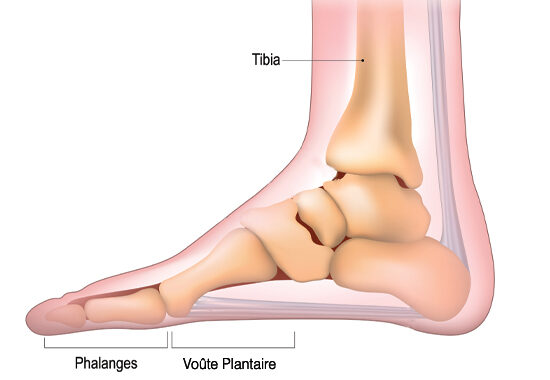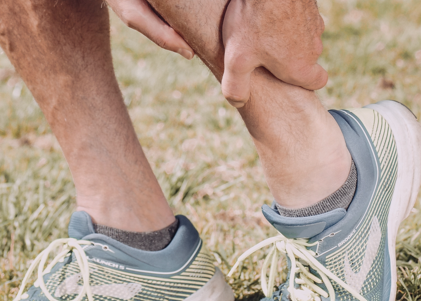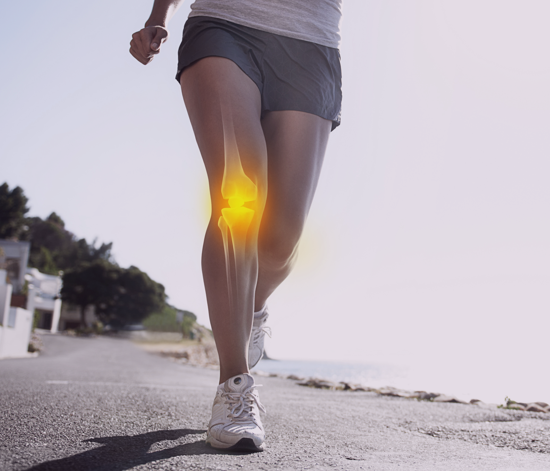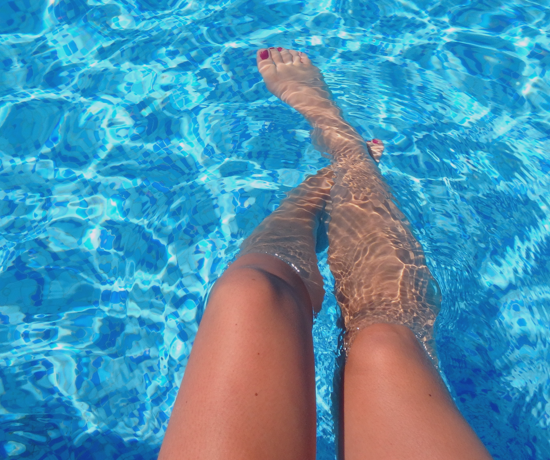2. Check the condition of your feet
We examine our faces carefully in the mirror, but what about our feet? The truth is they are often forgotten. Inspecting your feet can help you detect the symptoms of possible conditions. Watch for the following signs and consult a doctor if necessary to avoid complications:
- Swelling
- Redness
- Bulging
- Toe misalignment
- Lesions or infection
- Corns or bunions
- Ingrown nails
Watch out for the warning signs
We often tolerate stiffness, end-of-day pain, chronic swelling and localized pain in the feet. We tell ourselves, “This too shall pass.” However, these little aches and pains can be important signs. In other words, they may point to more serious problems if they are not attended to and treated.
3. Relax your muscles
Yoga offers simple and effective stretching options. And you don’t have to stand on your head!
To begin, become aware of your posture in mountain pose, just standing. Notice how your lower limbs place themselves naturally and try to spread your weight evenly over the “four corners” of your feet. Wake up your toes: lift, bend, spread.
Diamond pose also relaxes the plantar vault gently. Kneel with your back straight, and sit on your feet. They should form a kind of bowl. To increase the stretch, bend your toes back to touch the ground and sit on your heels.
Down dog takes you a little further. It stretches the foot and muscles of the lower body that provide stability, especially the calf muscles.
4. Treat your feet to a massage
Massaging the feet promotes blood flow and relaxes muscles. In addition to feeling good, the effects of massage provide a sense of well-being throughout the whole body. Massage can prevent certain problems caused by poor blood flow or a lack of movement in the joints.
You can see a massage specialist, or you can give yourself simple massages at home. *Ask about any contraindications (pregnancy, injury, diabetes, etc.).
Self-massage
Apply gentle pressure, making circular motions all over your feet. Above all, be aware of how it feels and do what is right for you.
Tennis ball or massage ball
Roll a ball under your foot from the heel to the tip of your toes. Repeat this strengthening and relaxing exercise a few times on each side. This type of massage is easy to incorporate into a daily routine.
5. Try footbaths
Foot baths improve blood flow. By doing so, they help reduce inflammation, swelling, numbness and heaviness.
To make the most of this relaxing time and keep it safe for your feet, consider the following before stepping into the water: contraindications, water temperature, length of bath, products to add.
6. Wear foot orthoses
Foot orthoses can significantly reduce the negative effects of foot discomfort in our active lives. They are one of the best ways to prevent common foot ailments.
Moulded to your foot, orthoses give the tissues and joints freedom of movement and better shock absorption. They improve posture and make walking easier.









